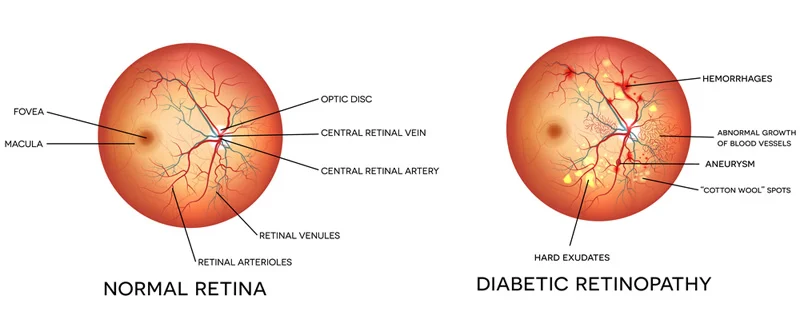
Understanding Diabetic Retinopathy: Causes, Symptoms, and Prevention
Introduction: Diabetic retinopathy is a serious eye condition that can lead to vision loss in individuals with diabetes. In this article, we’ll explore what diabetic retinopathy is, its causes, symptoms, and most importantly, how to prevent it. By understanding the risks and taking proactive steps, individuals with diabetes can help protect their vision and reduce the likelihood of developing diabetic retinopathy.
- What is Diabetic Retinopathy?
- Define diabetic retinopathy as a diabetes-related eye disease that affects the retina, the light-sensitive tissue at the back of the eye.
- Explain how high blood sugar levels can damage the blood vessels in the retina, leading to vision impairment or even blindness if left untreated.
- Causes and Risk Factors:
- Discuss the primary cause of diabetic retinopathy as prolonged exposure to high levels of glucose in the blood.
- Outline additional risk factors such as poorly controlled blood sugar levels, high blood pressure, high cholesterol, and diabetes duration.
- Symptoms of Diabetic Retinopathy:
- Describe common symptoms of diabetic retinopathy, including blurred or distorted vision, floaters, dark or empty areas in vision, and difficulty seeing at night.
- Emphasize the importance of regular eye exams for individuals with diabetes, as diabetic retinopathy may not cause noticeable symptoms in its early stages.
- Prevention Strategies: a. Maintain Optimal Blood Sugar Levels: Highlight the importance of controlling blood sugar levels through diet, exercise, medication, and regular monitoring. b. Manage Blood Pressure and Cholesterol: Encourage individuals with diabetes to monitor and manage their blood pressure and cholesterol levels to reduce the risk of retinal damage. c. Attend Regular Eye Exams: Stress the importance of annual comprehensive eye exams to detect diabetic retinopathy and other diabetes-related eye complications early. d. Quit Smoking: Discuss the link between smoking and an increased risk of diabetic retinopathy, and encourage individuals to quit smoking to protect their vision. e. Follow Medical Advice: Encourage individuals with diabetes to follow their healthcare provider’s recommendations for managing their condition and attending regular check-ups.
- Conclusion:
- Summarize the key points discussed in the article, emphasizing the importance of proactive management and preventive measures for diabetic retinopathy.
- Encourage individuals with diabetes to take control of their eye health by maintaining healthy lifestyle habits, controlling blood sugar levels, and attending regular eye exams to protect their vision for the long term.
By understanding the causes, symptoms, and prevention strategies for diabetic retinopathy, individuals with diabetes can take proactive steps to safeguard their vision and reduce the risk of vision loss associated with this condition.
